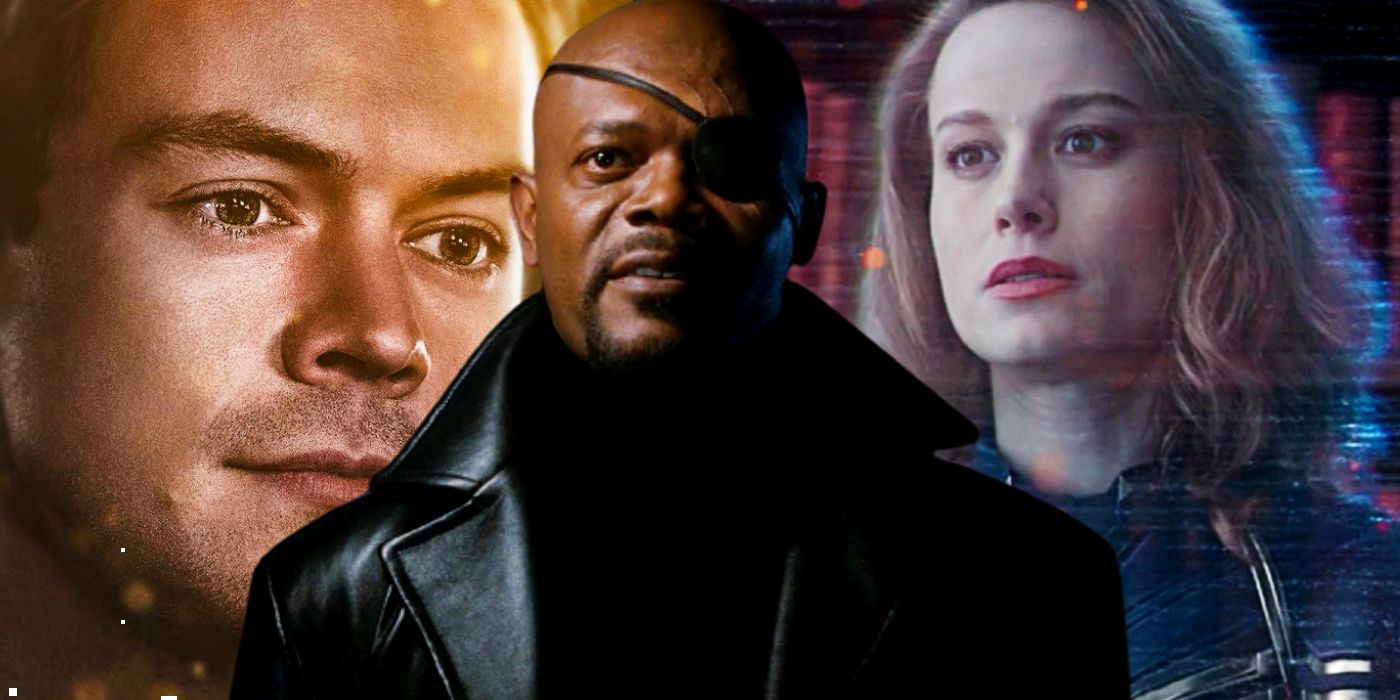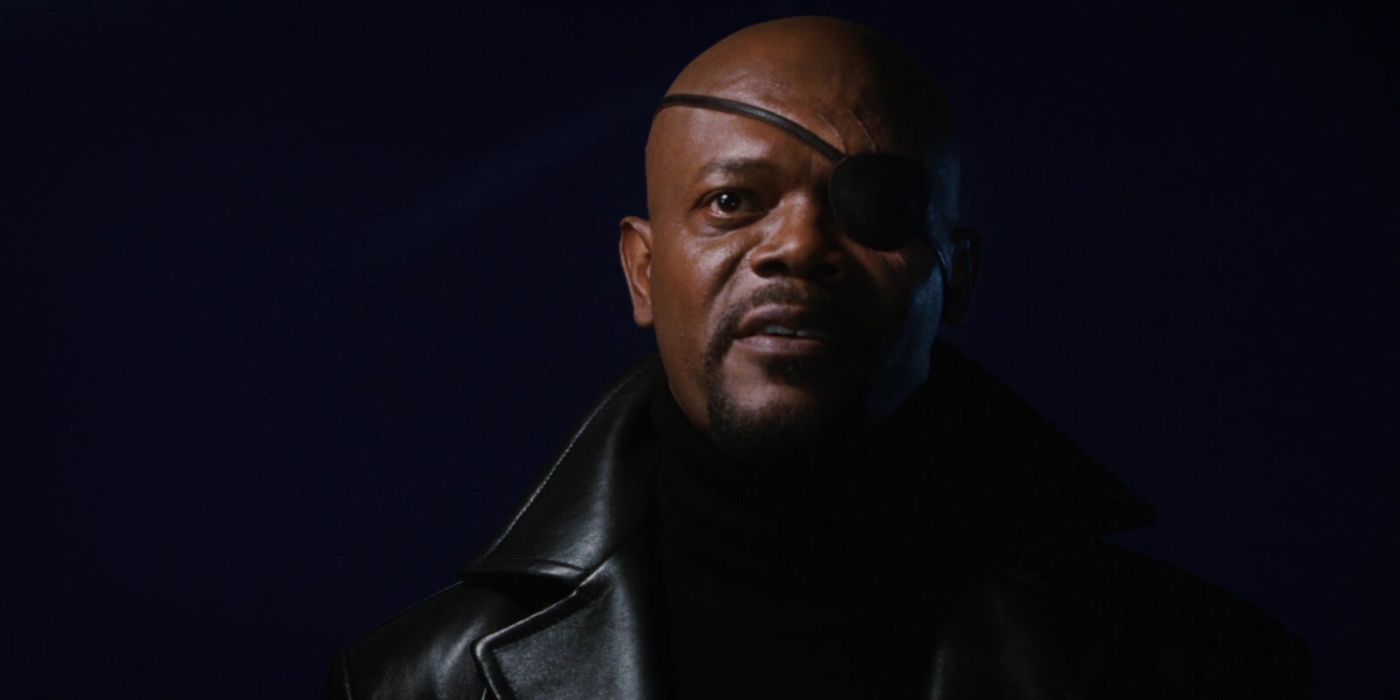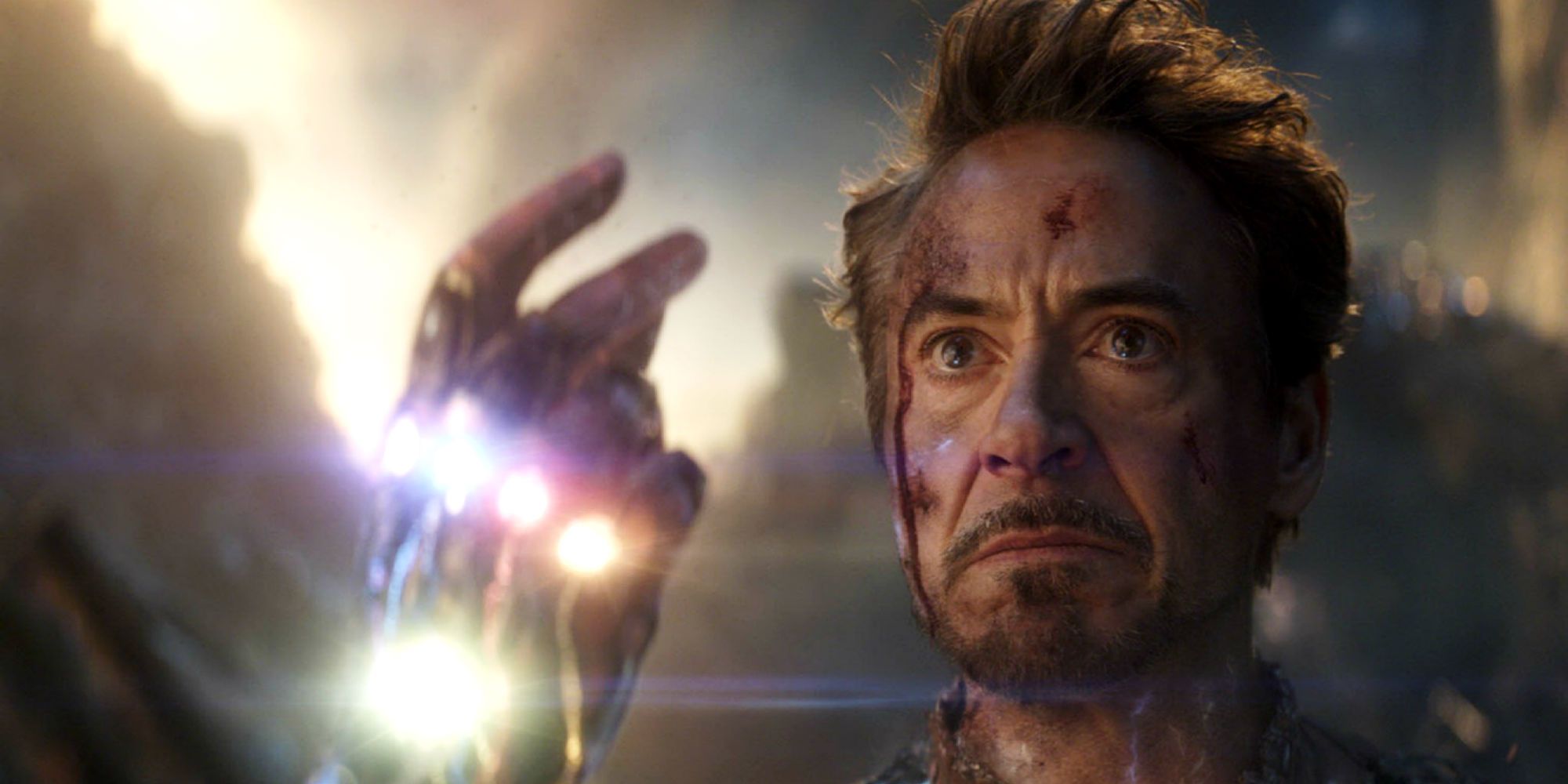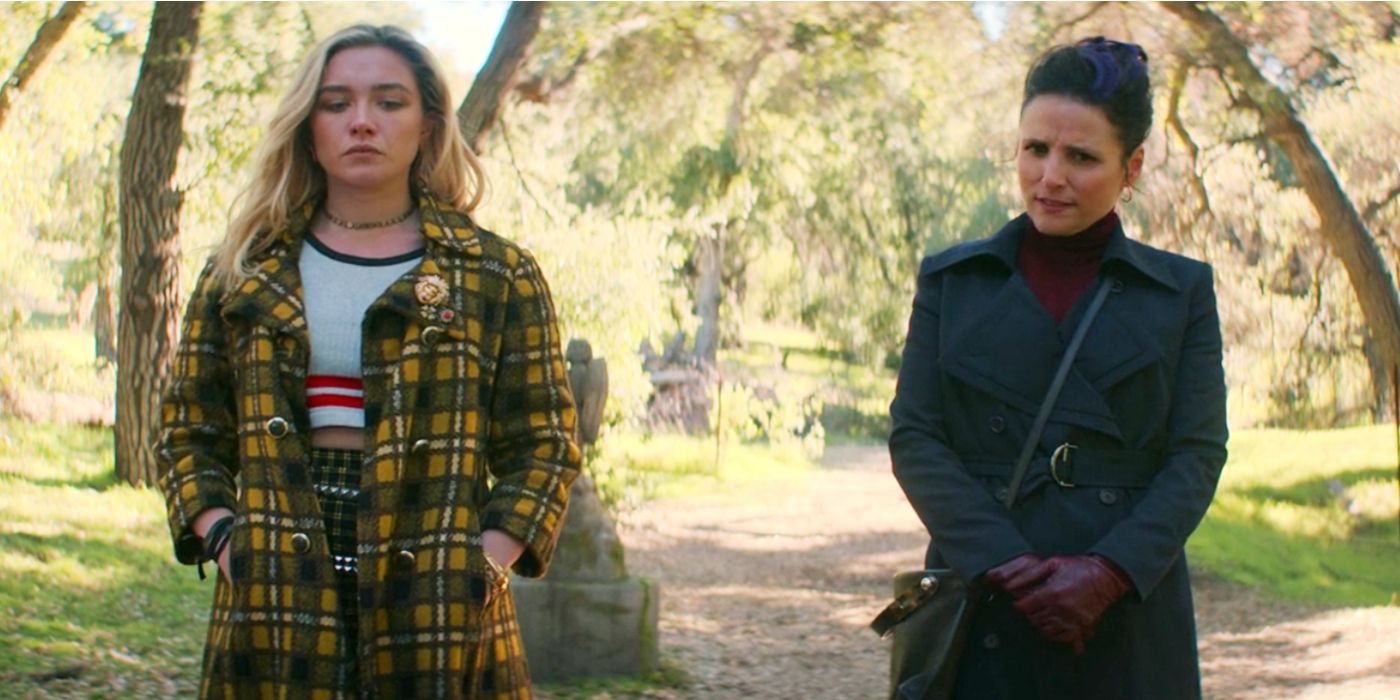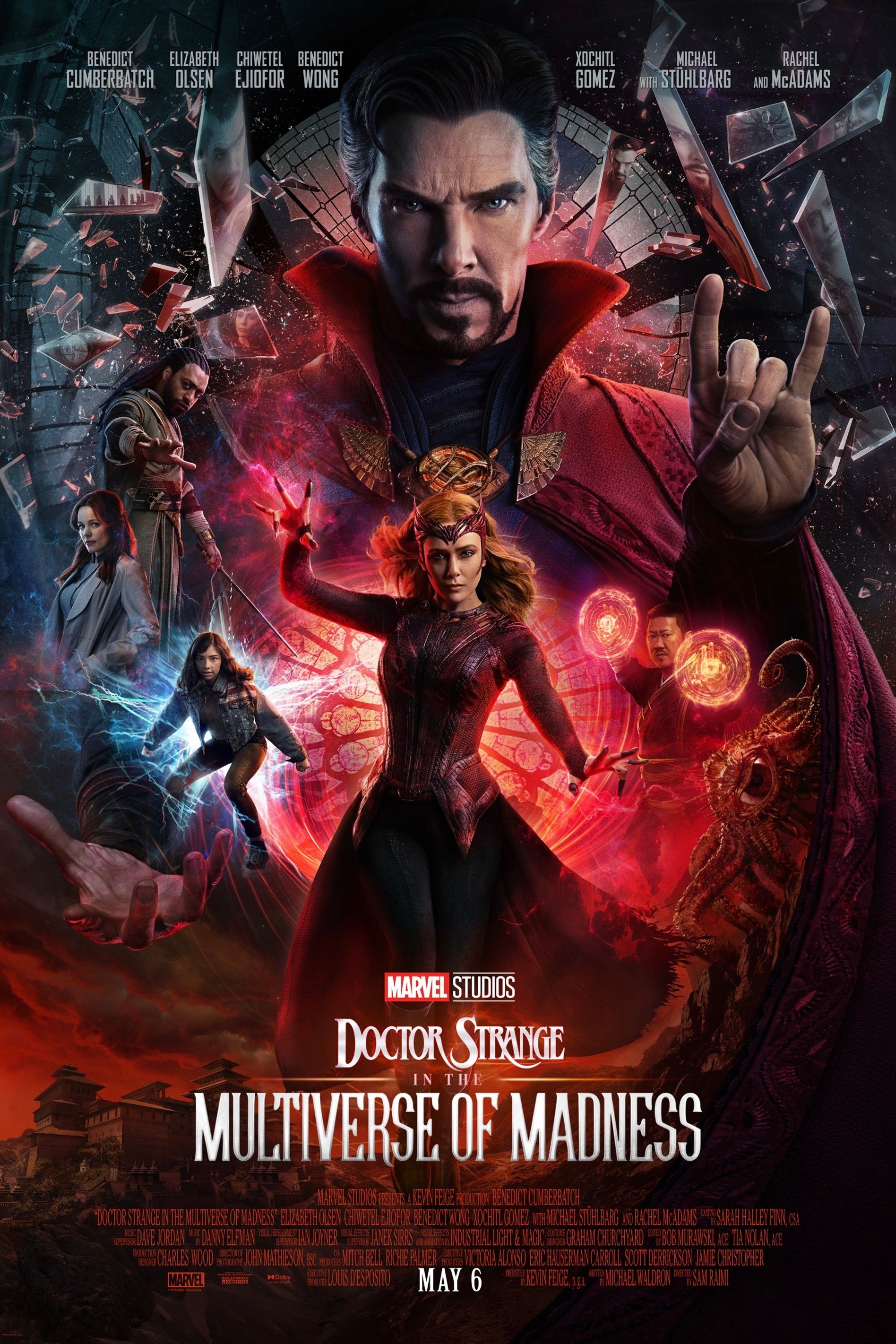Marvel's post-credits scenes are key to the MCU, but as shown in Phase 4 movies such as Shang-Chi and the Legend of the Ten Rings and Eternals, they can have an adverse effect as well. Ever since the MCU started in 2008 with Iron Man, end-credits scenes have been a hallmark of the shared universe. Marvel wasn't the first and certainly won't be the last to use an after-credits stinger, but the sheer amount of them and the way they laid the breadcrumbs for the future turned them into a major selling point of each movie, building out the interconnectivity from film to film and phase to phase.
What started with Samuel L. Jackson's Nick Fury emerging from the shadows to talk to Tony Stark (Robert Downey Jr.) has become more complex over the years, ranging from post-credits scenes that set up the next movie to those that helped shape the entire Infinity Saga. So far, Avengers: Endgame is the only MCU movie without a post-credits scene, reflecting its status as the "end" of that journey and story, but subsequent movies have picked up the baton.
So far, MCU Phase 4's three movies have delivered five different credits scenes. Unfortunately, though, some of these are presenting new challenges for the MCU, either insofar as what they're setting up isn't quite as clear or, in many cases, that Marvel's end-credits scenes are overshadowing the movies themselves. That's not to say Marvel needs to stop using after-credits teases - which would presumably never happen anyway - but they are arguably hurting the MCU rather than helping to make it exciting and great.
Why Marvel's Post-Credits Scenes Were Originally Great
From the very beginning, Marvel's post-credits scenes were integral to what Kevin Feige and co were building, and they were particularly perfect for Phase 1 of the MCU and the lead-up to The Avengers. Each movie added a new piece to the puzzle, whether that was Nick Fury's recruitment drive, or neatly setting up the next movie to come with a nice tease of what to expect, such as Mjolnir in the desert. Of course, part of what made these work was that it was something fresh and at least relatively unique, and it helps that the setups, even if somewhat basic by the standards of what the MCU's after-credits scenes have been since, worked as solid, intriguing scenes in their own right, offering a clear path for the future.
This continued throughout Phases 2 and 3; whether Marvel's end-credits scenes were set up, a gag, or sometimes both they succeed in everything they aimed to do. That is, the post-credits scenes gave a tantalizing hint of what was coming soon, most were rewarding enough, both in terms of being enjoyable moments and intriguing teases, that it felt worth staying around for, and crucially there was always a sense of momentum to them. That was critical in setting up The Avengers, where one MCU post-credits scene neatly led to the next movie, but it also fit throughout both on a micro-level (e.g. the Maximoff twins in Captain America: Civil War was a great tease for Avengers: Age of Ultron), and on a macro scale too, with the clear vision of Thanos as the overarching villain. All the way there was a sense of expansion and escalation that was necessary to continue developing the shared universe, but the scenes mostly (with some exceptions) felt like nice additions to the movie they were attached to; if they weren't there, then that itself was still a major, satisfying event film (again, with exceptions such as the more disappointing MCU movies like Thor: The Dark World or Iron Man 2).
MCU End-Credits Scenes Are Harder After Endgame & For Phase 4
Avengers: Endgame was the biggest change to the status quo for the MCU, and that includes its post-credits scenes. For the first time in a long time, the MCU's future is somewhat murky; while there's a slate of movies announced stretching into 2023 and more on the horizon, there's not the same kind of singular approach that defined the Infinity Saga. Instead, there's plenty to suggest Marvel is focusing on its multiversal saga, but also expanding its cosmic arm, focusing on introducing new legacy and replacement heroes, and building up to multiple different superteams, including a possible new Avengers lineup, the Thunderbolts, the Young Avengers, and more.
Combined with that is the difficulty in moving forward into Phase 4 of the MCU following on from Endgame, both as a great movie that encapsulated almost everything great about the Marvel Cinematic Universe, and as such an era-defining (and ending) exclamation point on what the MCU has done so far. Even now, Endgame is still shaping the MCU's future, with nearly all of Phase 4's movies and shows impacted by it in some way. With the past weighing so heavily upon it, and Phase 4 struggling to fully get going on the cinematic side - there have been delays, of course, but the mixed reviews for Eternals and relatively muted response to Black Widow suggest the MCU isn't fully back to what it was - then Marvel needs to do more to build excitement for what's here now, rather than what's coming next, which the MCU's end-credits scenes run counter to.
Marvel's After Credits Scenes Overshadow Their Movies
Perhaps the biggest issue with Marvel's post-credits scenes in Phase 4 is that many of them feel bigger than the movies they're a part of. The MCU's credits stingers have always been designed to build hype, but it generally felt much more balanced previously; take them away, and the movies were still, for the most part, good, entertaining, and full of moments worth talking about and being excited over. That feels like it's missing in Phase 4. Black Widow is a solid enough movie, but one that leans too hard on MCU formula; it's notable that its deleted ending for Natasha Romanoff (Scarlett Johansson) would've seen her back in Ohio, recognized by a little girl and sharing a sweet moment with them that speaks to her importance as a hero and enduring legacy. Instead, it was replaced by a clearer connection to the end of Captain America: Civil War and then Avengers: Infinity War. Black Widow's post-credits scene fits with that same approach: it finally gives Natasha a memorial for her death that Endgame failed to, but immediately undercuts the emotional impact by instead setting up the future of Yelena Belova (Florence Pugh), putting the future tease directly ahead of paying off the actual movie (and Nat's MCU arc) itself.
This problem is arguably worse in both Shang-Chi and the Legend of the Ten Rings and Eternals. The former is a good movie in its own right, with connections to the MCU's past via Iron Man and Iron Man 3, yet largely standing on its own terms as something that stands out from the MCU crowd and explores parts of the universe both unseen and underrepresented. But Shang-Chi's mid-credits scene brings in Bruce Banner (Mark Ruffalo) and Captain Marvel (Brie Larson) setting up at least two different projects and, with the presence of two Avengers (including the very notable change to Banner), that has proved to be the biggest talking point of the entire movie, overshadowing all the great work done between Shang-Chi (Simu Liu) and his relationships with the likes of Wenwu (Tony Leung) and Katy (Awkwafina).
Eternals had something similar; indeed, even before it released, thanks to spoilers, discussion of Eternals was dominated by Harry Styles being in its end-credits scenes. The moment itself feels somewhat tacked on (and features some bad CGI for Patton Oswalt's Pip), but the quality of the scene hardly matters next to the sheer presence of Styles is in the MCU. Similarly, the second Eternals' credits scene introduces Blade (Mahershala Ali), a character and casting first announced in the summer of 2019. After over two years, his presence is a voice cameo (and one that's not initially obvious); that lets it down on two counts, because Blade as a character is deserving of more, and yet it still overshadows much of what Eternals did (although it has its own struggles as a more middling Marvel movie).
This isn't an entirely new problem for the MCU - Ant-Man and the Wasp is a movie that's existence is largely justified by its post-credits scene - but it's one where, in a Phase 4 movie slate that so far has felt underwhelming, the constant focus on selling the next big thing without being able to fully sell the current thing seems like its damaging, where the sheer size and scale of the MCU and its apparent inevitability to continue and grow no matter what. With Marvel's determination to conquer the cinematic landscape never-ending and four movies releasing within 2021 alone, the MCU's post-credits scenes have turned from a fun addition to the event to becoming the event themselves, and if a movie ticket is being solid on a 30-second tease for what's next (or what might be coming in 2-3 years, even), then that's an issue Marvel's post-credits scenes mostly didn't have in past phases, and future films need to learn how to address.

